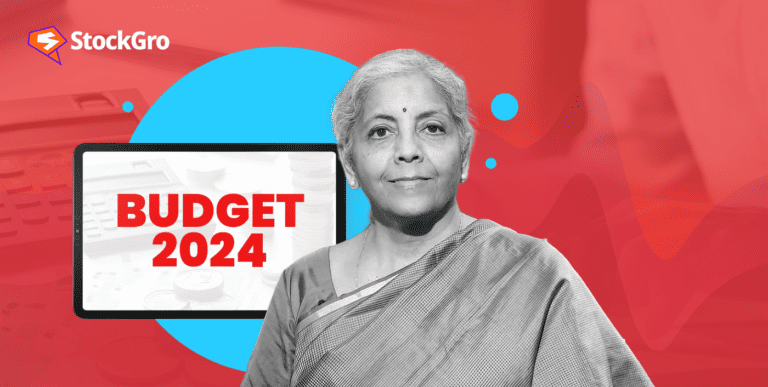
Has the complexity of financial terminology ever left you feeling overwhelmed or anxious when it came to making important decisions? Many others relate. Here is where knowledge of personal finance becomes relevant.
What is financial literacy in India? Understanding and utilising a variety of financial ideas and instruments, such as personal financial management, investing, and budgeting, is known as financial literacy. India has a lot of cultural diversity and economic variability, so everyone needs to have a good grasp of personal finance.
This article will take you on a journey to learn about the importance of financial literacy, how it affects personal finance management, and how it is currently perceived in India. We’ll also explore practical tips and resources to improve our financial knowledge. Get ready to delve into the fascinating world of finance!
Understanding personal finance
When exploring the realm of financial literacy, one must not ignore the significance of comprehending personal finance.
Elements of personal finance include budgeting, long-term savings, and investment strategies. Budgeting, banking, insurance, mortgages, investments, tax and estate planning, and retirement planning are also included.
The basic concepts of personal finance include:
Budgeting: To start managing your money wisely, you need to make a budget. Individuals can save or invest more of their income when they have a budget in place that limits their spending.
Saving: This entails reserving money from our earnings for when we need it. In addition to allowing us to save up for bigger purchases, it is a safety net for our finances.
Investing: Investing involves spending money to earn a profit later. It can be used to build wealth and reach long-term financial objectives.
Debt management: Making a repayment strategy requires knowing your total debt, interest paid, and when it will be paid off.
Also read: What is a budget – A beginner’s guide
Developing financial goals
Financial goals are like the destination on your personal finance map. A lack of knowledge in this area will leave you aimlessly wandering in the financial world. There are three main groups into which these objectives fall:
- Short-term goals (within a year): A new phone, a dream vacation, or even an emergency fund could be the goal of these savings.
- Medium-term goals (1-5 years): These goals include putting money aside for a vehicle, a house down payment, or a new business venture.
- Long-term goals (5+ years): These are usually your big, life-changing goals. Some examples of such goals include funding a child’s college education, purchasing a home, or preparing for old age.
But how do we set these goals? We use the SMART criteria. Let’s break it down:
Specific: Make sure your objective is well-defined and precise. Instead of saying, “I want to save money, ” say, “I want to save ₹50,000 for a vacation to Goa next year. ” Your objectives will be laid out for you in perfect detail with the help of this.
Measurable: You ought to have the capability to monitor how you’re growing. To keep track of your vacation savings, write down the amount you’ve put away every month. It will help you stay motivated and see if you’re making progress.
Achievable: Make sure your objective is both reasonable and doable. While it’s good to aim high, don’t make the goal impossible. Make sure it’s a goal you can reach with some effort.
Relevant: In addition to being meaningful to you, your objective should align with your plans for the future. In a financial crisis, putting money aside for a vacation is pointless.
Time-bound: Establish a due date for your objective. It creates a feeling of urgency, which can motivate you to begin. For example, if you want to save for a vacation, set a date for when you want to go.
Building wealth over time
In the realm of this journey to financial literacy, understanding how to build wealth effectively is a critical skill. Accumulating wealth is more of a long-distance run than a quick dash. For this, you need to think about the big picture and use compounding as a tool.
Compounding increases an investment’s value when interest and capital gains on that investment earn interest over time. The benefit of holding onto your investments for the long haul is that they experience exponential growth.
Also read:The role of compound interest to reach your financial goals
Now, let’s talk about strategies for building wealth:
Diversification: To lower your overall investment risk, you should diversify your holdings. Investing in a single asset should not be part of your strategy. An even distribution of profits over time and less risk of catastrophic losses are possible outcomes of a well-diversified portfolio.
Dollar-cost averaging: Regardless of the market price, this strategy calls for regular investments of a predetermined sum. It can lessen the blow of market volatility and the danger of basing bad investments on temporary price swings.
Regular savings: One of the best and simplest ways to accumulate wealth is to save money consistently. Your ability to save and invest is just as important as your ability to earn.
Invest in yourself: One way to do this is by furthering one’s education, acquiring new skills, or perhaps launching one’s own business. Raise your earning potential by acquiring more skills and furthering your education.
Real estate investing: Investing in property can be a lucrative choice. It can be a steady income generator and, who knows, maybe even appreciate in value over time.
Also read: Maximising returns with Dollar-Cost Averaging
The current state of financial literacy in India
India has over 1.4 billion people, but only 27% of them know how to manage their money. This statistic is startling and has far-reaching implications.
To be financially literate means more than just knowing how to handle money. The focus is on giving people and groups greater power. A person’s financial literacy determines how well they can handle their own money. They can save for unexpected expenses, invest in promising opportunities, and plan. As a result, the economy could expand and people’s quality of life could improve.
When individuals lack financial literacy, however, the opposite is also true. It has the potential to cause economic inequality and bad financial decisions. For example, failing to understand personal finance could lead to getting into a cycle of unmanageable debt, often at the hands of loan sharks.
Additionally, the country’s economic development may be impeded by the low financial literacy rate. Individuals’ financial planning improves due to financial literacy, which contributes to national economic growth.
Therefore, improving the financial literacy rate in India is not just an individual concern but a national priority. It’s a key factor in the country’s economic growth and prosperity.
Financial literacy initiatives in India
In conjunction with the Reserve Bank of India (RBI), the government has been a leader in several financial literacy initiatives in India.
The RBI-mandated curriculum for basic financial education includes a set of sixteen posters, a Financial Literacy guide, and a Financial Diary. In addition, they have created a special camp booklet for beginners that covers the basics of saving, borrowing, interest, compounding, the time value of money, inflation, and the relationship between risk and reward.
The RBI has also introduced several seminars, financial literacy camps, and online courses. Individuals can make better financial decisions with the support of these programmes that raise awareness of the importance of financial literacy in India.
The RBI also requires financial institutions, including banks, to educate their clients on personal finance. The goal of this programme is to make sure that everyone can learn about personal finance if they want to.
These initiatives highlight the importance of financial literacy in India and represent significant steps towards improving the country’s financial literacy rate.
Bottomline
Financial literacy is the map that can lead us to prosperity in the enormous Indian economy. Rather than focusing solely on financial records, we should strive to empower individuals and communities by helping them transform their dreams into attainable goals.
Even though we still have a long way to go, we are getting closer to a day when every Indian can handle their own money with ease thanks to increased financial education.

